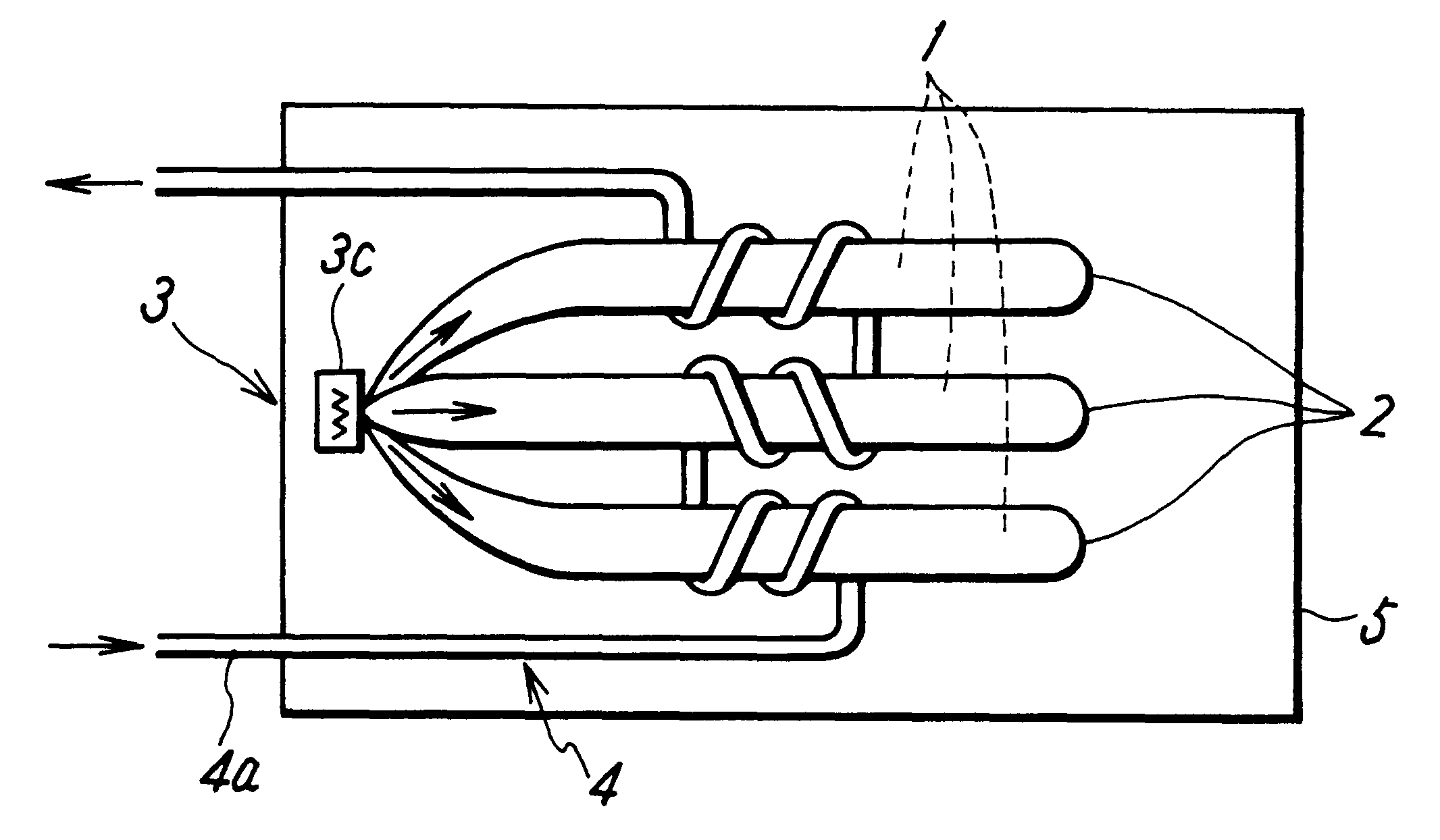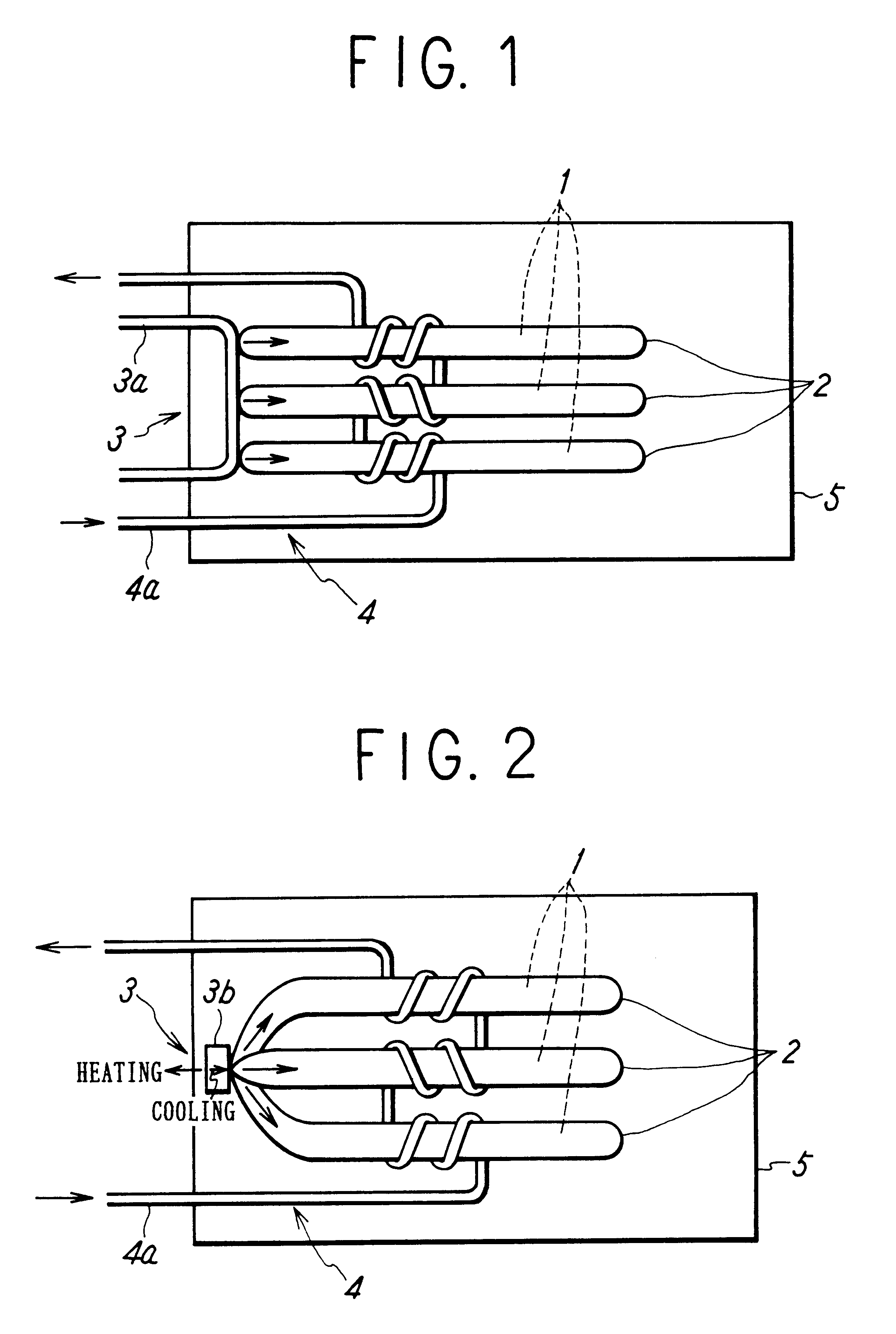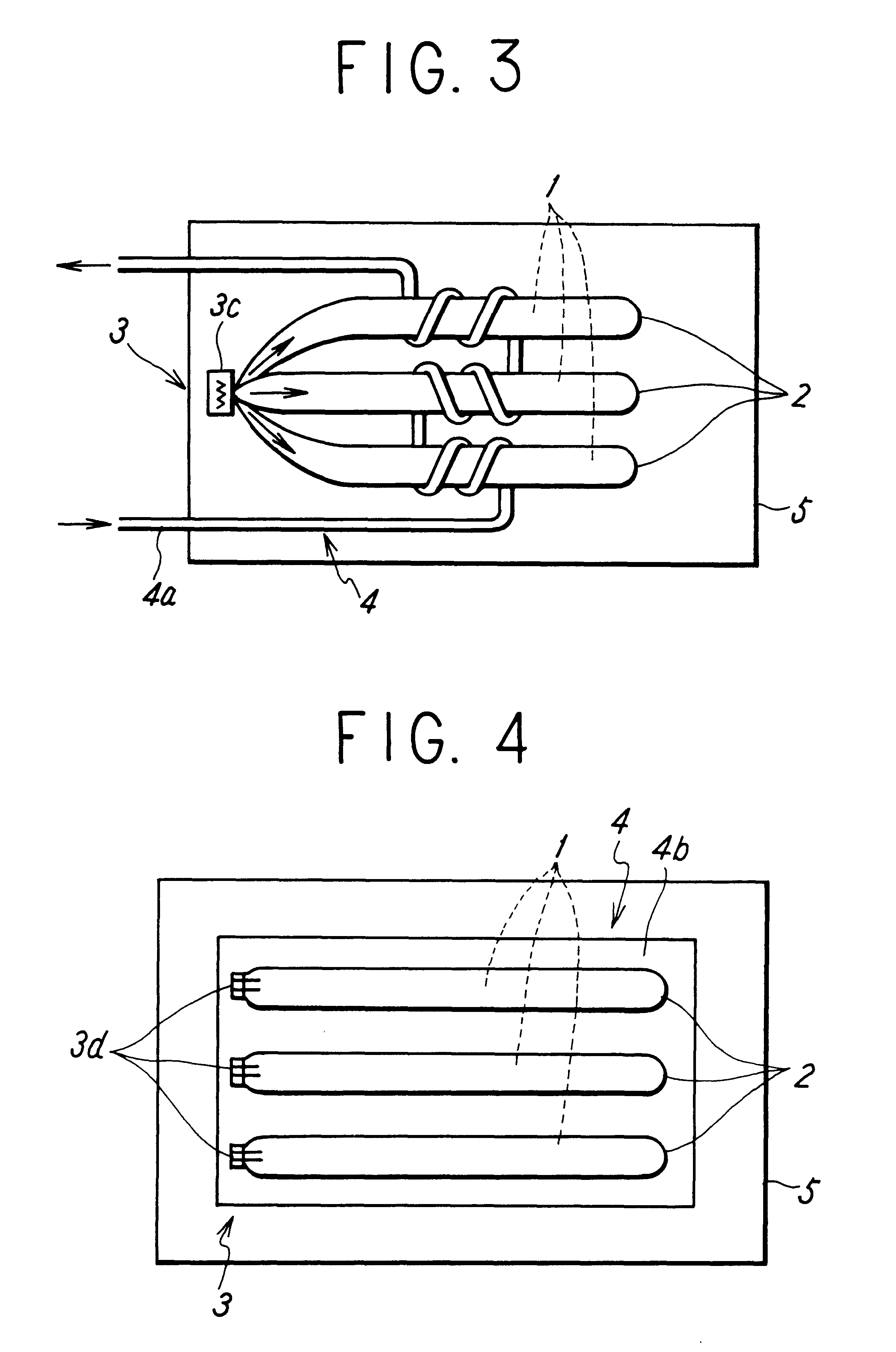Heat storage type heater and method of controlling input and output of heat of the same
a technology of heat storage type and heater, which is applied in the direction of indirect heat exchangers, heating types, lighting and heating apparatus, etc., can solve the problems of affecting the operation of the device, the inability of latent heat storage type heating devices to be subjected to industrial applications, and the difficulty of restoring the heavy and light molecules which are separated from each other
- Summary
- Abstract
- Description
- Claims
- Application Information
AI Technical Summary
Benefits of technology
Problems solved by technology
Method used
Image
Examples
first embodiment
FIG. 1 shows the structure of a heat-storage type heater according to the present invention. In this figure, an outer enclosing member 5 of the heat-storage type heater may be made of an optional material corresponding to uses thereof. The outer surface of the member 5 is a thermal radiation surface through which heat from the heat-storage type heater is radiated. A heat-storing material 1 capable of being supercooled can be selected from various materials which can be selected from materials which present significant supercooling phenomena, corresponding to required temperatures and degrees of supercooling. As regards the degree of supercooling, it is known that disodium hydrogen phosphate dodecahydrate (Na.sub.2 HPO.sub.4.12H.sub.2 O) has a solidifying point of about 36.degree. C., and a nucleation temperature of from about 0.degree. C. to about 36.degree. C. Sodium acetate trihydrate (CH.sub.3 COONa.3H.sub.2 O) has a solidifying point of about 58.degree. C., and a nucleation temp...
fifth embodiment
That is, in the heat-storage type heater of the fifth embodiment, the heat emission to be applied every second time, namely, every even number of times in the case in which the heat emission cycle is repeated a plurality of times can be realized without external control being carried out. That is, the heat supplied in the limited time period can be effectively used by utilizing the function inherent in the heat storage, namely, the compensation of a time lag between the inputting and the outputting of heat, simply with a small amount of energy.
The temperature t of the heat-storage type heater at the time after a time-period t from the time K.sub.1 can be approximated by the following equation. ##EQU1##
In which a, is the area of the heat radiation surface, a.sub.2 is the area of the surface of the heat-storage type heater excluding the heat radiation surface k.sub.1 is the heat transfer coefficient between the heat-storage type heater and the heating object positioned on the thermal ...
PUM
 Login to View More
Login to View More Abstract
Description
Claims
Application Information
 Login to View More
Login to View More - R&D
- Intellectual Property
- Life Sciences
- Materials
- Tech Scout
- Unparalleled Data Quality
- Higher Quality Content
- 60% Fewer Hallucinations
Browse by: Latest US Patents, China's latest patents, Technical Efficacy Thesaurus, Application Domain, Technology Topic, Popular Technical Reports.
© 2025 PatSnap. All rights reserved.Legal|Privacy policy|Modern Slavery Act Transparency Statement|Sitemap|About US| Contact US: help@patsnap.com



